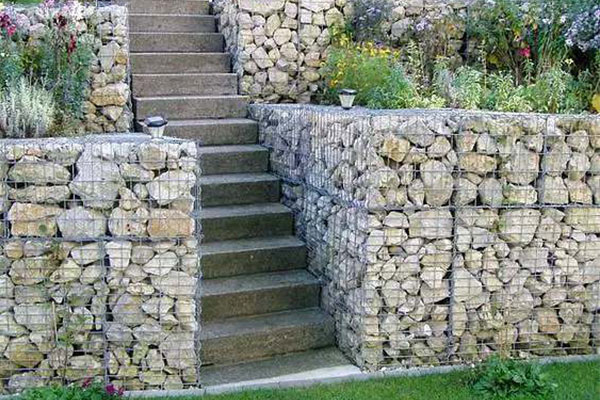Gabion Wall: What It is, Construction and Benefits
In the world of modern landscaping, there is a growing trend towards sustainable and aesthetically pleasing solutions. Gabion walls, once primarily utilized for erosion control and infrastructure support, have emerged as a stylish and eco-friendly landscaping feature. In this article, we will explore what gabion walls are, their history, construction, and the multitude of advantages they offer in contemporary landscape design.

What Are Gabion Walls?
Gabion walls are a type of retaining wall or decorative wall structure that is constructed using wire mesh baskets or boxes filled with rocks or stones. These wire mesh baskets are typically rectangular or cubic in shape and serve as the structural framework for the wall.
A Brief History of Gabion Walls
The concept of gabions can be traced back to ancient civilizations, where they were used for various engineering and military purposes. Over the centuries, gabion walls evolved as a solution to stabilize soil, protect against erosion, and construct retaining walls. Today, they have experienced a renaissance in landscape design, appreciated for their versatility and sustainable nature.
Construction of Gabion Walls
The construction of gabion walls is a straightforward process that can be undertaken by both professionals and DIY enthusiasts. The key steps involved are as follows:
- Material Selection: Choose rocks or stones that are durable and visually appealing. These will constitute the core of your gabion structure.
- Wire Mesh Boxes: Assemble the wire mesh boxes into the desired size and shape. The wire mesh is typically made of galvanized steel for longevity.
- Filling the Boxes: Carefully fill the wire boxes with the chosen stones or rocks, ensuring they are compacted to create a stable structure.
- Securing the Boxes: Utilize fasteners, wires, or clips to securely close the wire mesh boxes.
- Arrangement: Stack or arrange the gabion boxes as per your design to create the desired wall or structure.
- Optional Enhancements: To enhance the aesthetics and functionality, consider incorporating decorative elements such as plants, lighting, or seating areas.
Benefits of Gabion Walls
- Erosion Control: Gabion walls serve as effective barriers against soil erosion, making them a valuable addition to landscapes on slopes or near bodies of water.
- Aesthetic Appeal: Their unique combination of natural elements and industrial design can transform any outdoor space, giving it a distinct, rustic charm that complements a wide range of architectural styles.
- Eco-Friendly: Gabion walls are environmentally friendly as they utilize natural materials and promote proper drainage, helping maintain healthy soil conditions.
- Durability: These structures are built to withstand the test of time and can endure harsh weather conditions without deteriorating.
- Versatility: Gabion walls can be adapted for various landscaping applications, including garden beds, terraces, seating areas, and retaining walls.
- Low Maintenance: Once installed, gabion walls require minimal upkeep. Unlike traditional walls, they do not need to be painted or repointed.
Conclusion
Gabion walls have transitioned from practical solutions for erosion control to becoming a hallmark of modern, sustainable landscaping. Their historical relevance and functional benefits have given way to a resurgence in popularity, both for their ability to serve critical purposes and their striking visual impact. Whether you’re a homeowner seeking to enhance your garden or a landscape designer looking for an eco-friendly solution, gabion walls offer a unique blend of aesthetic appeal and environmental sustainability for your outdoor projects.

